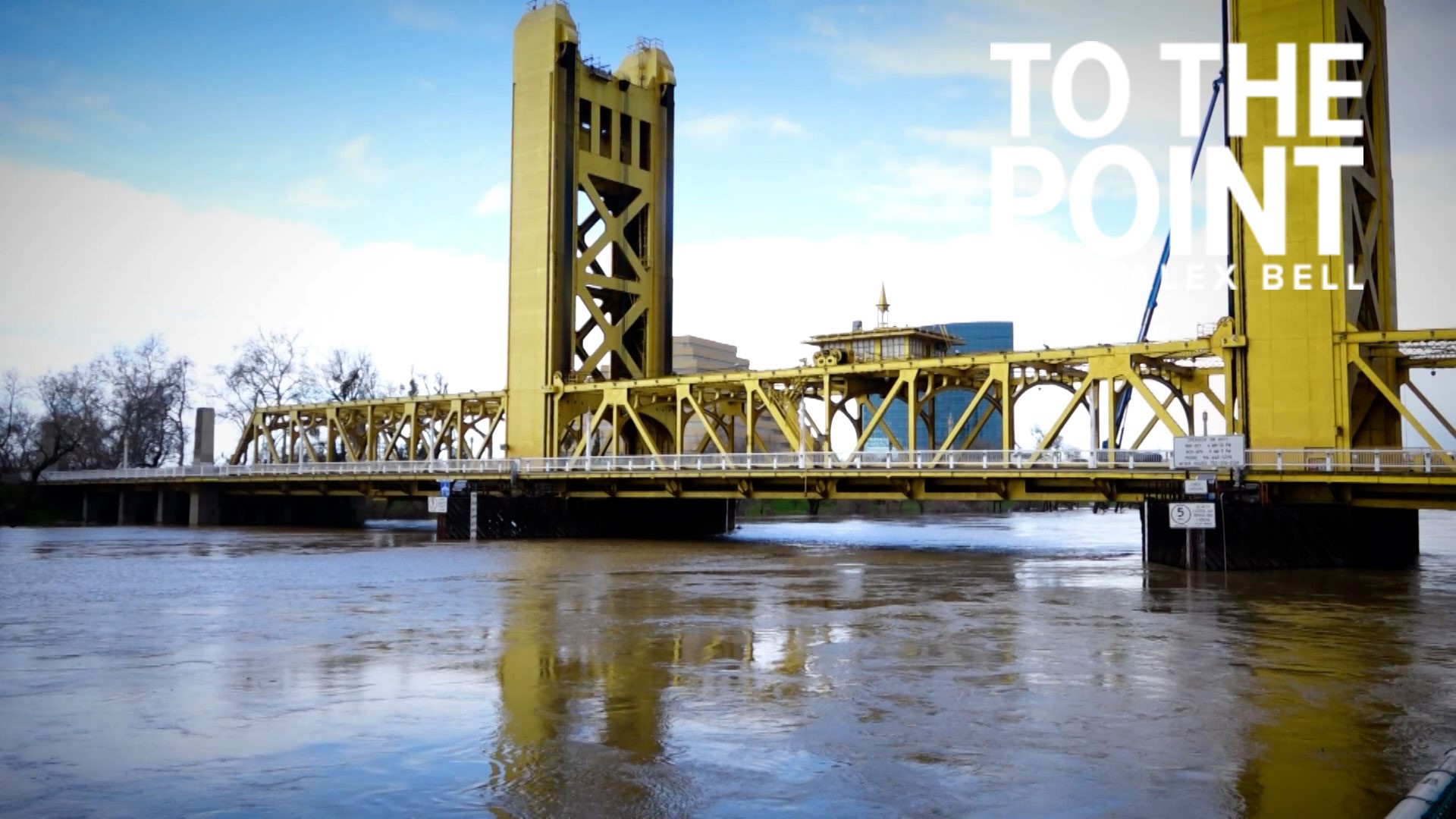SACRAMENTO, Calif. — Atmospheric rivers, which are intensified by climate change, account for more than 90% of flood damages in California. These storms present the biggest threat to our low-lying areas sitting below levees.
Liz Bryson is the Manager of Flood Operations at the California Department of Water Resources. Bryson and the DWR lead the state’s flood response. When activated, people pack a relatively small and unassuming room in Sacramento.
"One big part of what we do during high water is facilitated discussions between reservoir operators because those releases into the rivers could have major impacts downstream," said Bryson. "So, we want to make sure that all the appropriate agencies are in the conversation so they're not just making decisions in silos. Emergencies begin and end at the local level, so when a local agency runs out of resources, they move up to the county, and the county runs out of resources, they come up to the state level. The flood operation center coordinates and supports that response.”
The Flood Ops Center was activated in 2019 for four days. In comparison, the center was active for 151 days in 2017 -- the year of the Oroville Dam Crisis.
Nearly 200,000 people living downstream from the dam were told to leave their homes. It was a crisis Butte County Sheriff Kory Honea remembers well.
"There's been an ongoing effort to try to get people to understand that we don't issue these warnings lightly," said Honea. "They're based on the best information we have at the time. They're based on our experience with these kinds of events and asked that they heed those warnings and move to an area where they're much safer. One of the things that we found or learned is that the most effective way to get somebody to evacuate is for a uniform law enforcement officer to go to their house, knock on their door, tell them of the emergency and tell them what they need to do. Sometimes you don't have the time for that and certainly (the) spillway incident was one of those instances where we did not have time."
In 2017, Sheriff Honea personally called David and Mariana Rodriguez to tell them to leave their home.
“I said, 'Alright, well, we're going to try to get out of here fast as I can and I know a bunch of backroads,'" said David Rodriguez. “It was able to get me pretty fast to the Knights Landing area. Everybody was trying to go out to either Woodland, Colusa, different areas. Once I hit Knights Landing to Woodland, it took me about two hours to get into Woodland, which should be only about a 20-minute drive.”
They opted to take the backroads instead of the major thoroughfares, something not recommended if there's flooding.
“There absolutely are designated flood emergency routes from every community in Sacramento County in San Joaquin County and up and down the valley,” said John Cain with River Partners.
Cain works to restore natural floodplains and bolster defenses protecting flat, low-lying cities in the Sacramento and Central valleys.
“What building in the floodplains does -- behind a levee or below a dam -- is puts a whole bunch of people in harm's way and enriches some developers that put houses in the floodplain," said Cain. "They're not paying for the dam. They're delivering a check, almost certainly not a check... a bill, almost certainly to future generations to have to pay for that foolish development.”
Following the Hurricane Katrina disaster in Louisiana, officials put a building moratorium on Sacramento’s Natomas neighborhood until 2015 over concerns the levees were not strong enough.
Currently, the levee system in place is still being upgraded to better withstand heavy storms.
"What's really important is everybody understands what the evacuation route is," said Cain. "It's particularly important for residents to know where to go and where not to go. Sometimes people think all I got to do is get out of town. Well, you could be driving right into the flood."
Renderings from Sacramento County show the evacuation route should a levee fail in South Natomas. Large portions of the area would be underwater in hours.
If a levee broke in the area around Old Sacramento, most of downtown and the Pocket would be under 16 feet of water within a day.
As we live and continue to build in flat, low-lying cities in the valley, it’s important to know your way out should disaster hit. Your best defense against flooding is to be prepared.
Resources:
- City of Sacramento flood evacuation map
- Sacramento County flood evacuation maps
- San Joaquin County flood evacuation maps
- Butte County flood evacuation maps
- Placer County flood information site
- City of Roseville flood simulation map
- Solano County flood information
- Stanislaus County flood information site
- Sutter County flood evacuation maps
- Yolo County flood evacuation maps
- Yuba County flood information site



















